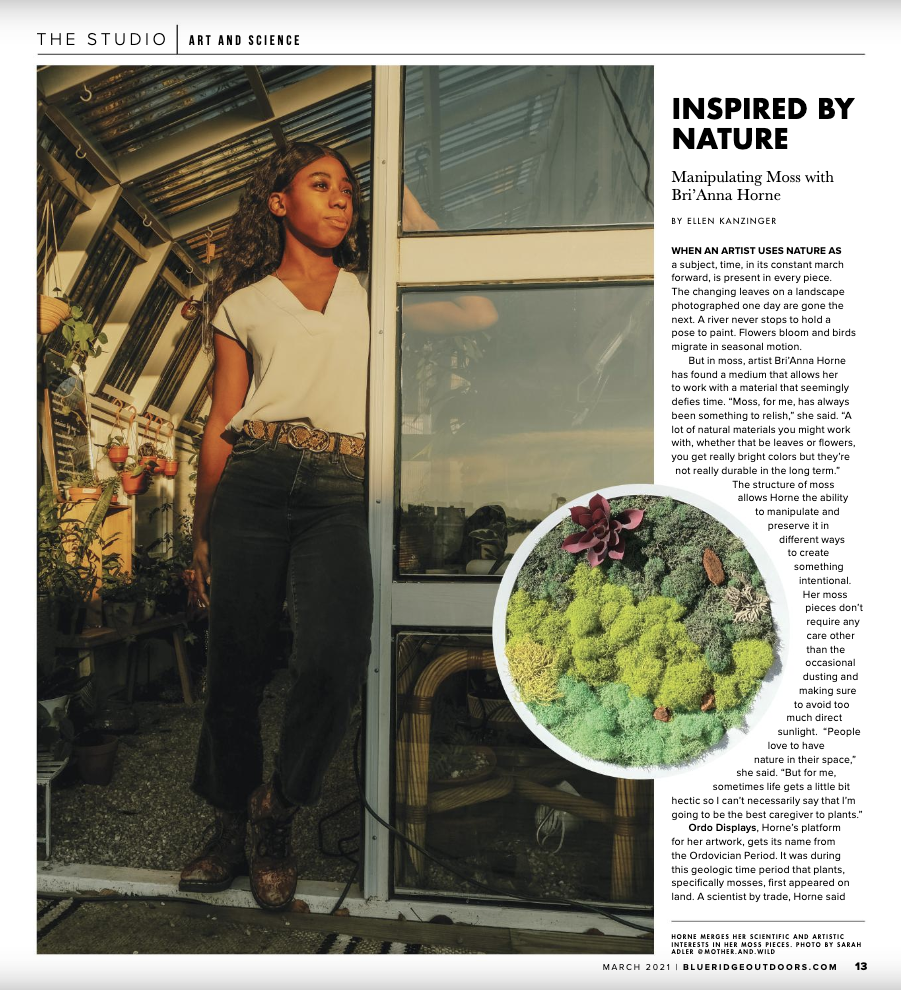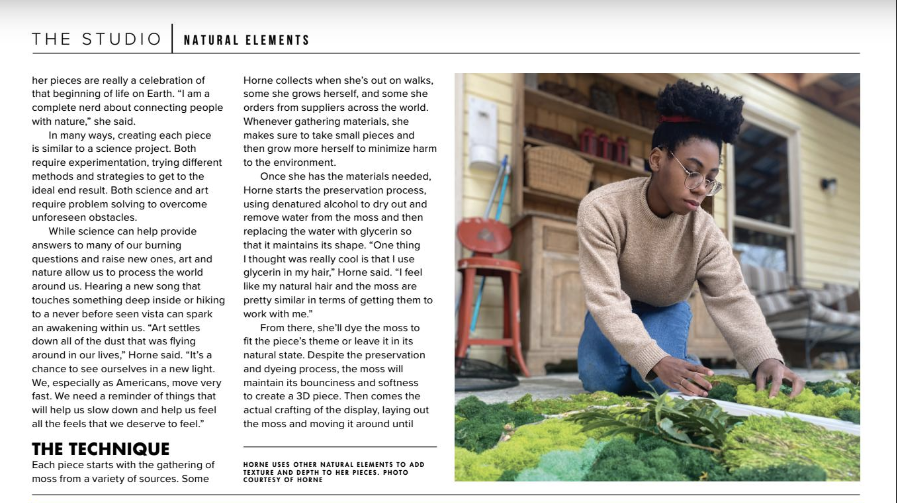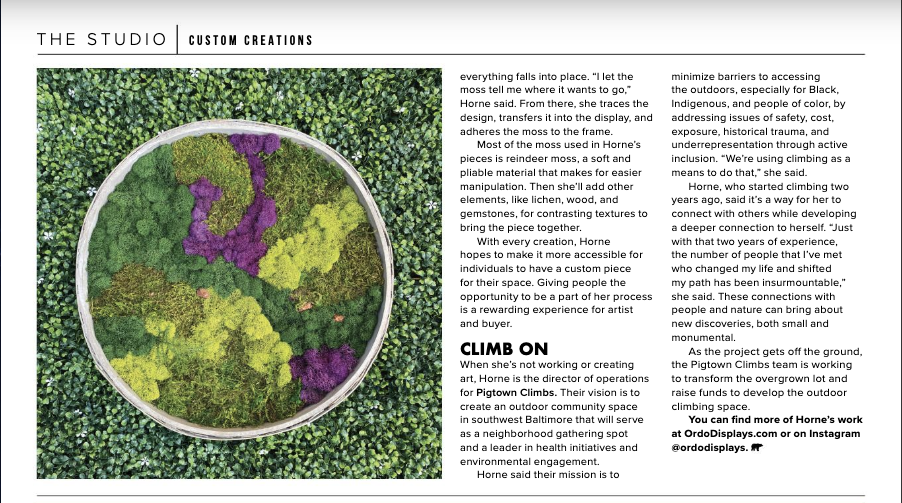Manipulating Moss with Bri’Anna Horne
When an artist uses nature as a subject, time, in its constant march forward, is present in every piece. The changing leaves on a landscape photographed one day are gone the next. A river never stops to hold a pose to paint. Flowers bloom and birds migrate in seasonal motion.
But in moss, artist Bri’Anna Horne has found a medium that allows her to work with a material that seemingly defies time. “Moss, for me, has always been something to relish,” she said. “A lot of natural materials you might work with, whether that be leaves or flowers, you get really bright colors but they’re not really durable in the long term.”
The structure of moss allows Horne the ability to manipulate and preserve it in different ways to create something intentional. Her moss pieces don’t require any care other than the occasional dusting and making sure to avoid too much direct sunlight. “People love to have nature in their space,” she said. “But for me, sometimes life gets a little bit hectic so I can’t necessarily say that I’m going to be the best caregiver to plants.”
Ordo Displays, Horne’s platform for her artwork, gets its name from the Ordovician Period. It was during this geologic time period that plants, specifically mosses, first appeared on land. A scientist by trade, Horne said her pieces are really a celebration of that beginning of life on Earth. “I am a complete nerd about connecting people with nature,” she said.
In many ways, creating each piece is similar to a science project. Both require experimentation, trying different methods and strategies to get to the ideal end result. Both science and art require problem solving to overcome unforeseen obstacles.
While science can help provide answers to many of our burning questions and raise new ones, art and nature allow us to process the world around us. Hearing a new song that touches something deep inside or hiking to a never before seen vista can spark an awakening within us. “Art settles down all of the dust that was flying around in our lives,” Horne said. “It’s a chance to see ourselves in a new light. We, especially as Americans, move very fast. We need a reminder of things that will help us slow down and help us feel all the feels that we deserve to feel.”
The Technique
Each piece starts with the gathering of moss from a variety of sources. Some Horne collects when she’s out on walks, some she grows herself, and some she orders from suppliers across the world. Whenever gathering materials, she makes sure to take small pieces and then grow more herself to minimize harm to the environment.
Once she has the materials needed, Horne starts the preservation process, using denatured alcohol to dry out and remove water from the moss and then replacing the water with glycerin so that it maintains its shape. “One thing I thought was really cool is that I use glycerin in my hair,” Horne said. “I feel like my natural hair and the moss are pretty similar in terms of getting them to work with me.”
From there, she’ll dye the moss to fit the piece’s theme or leave it in its natural state. Despite the preservation and dyeing process, the moss will maintain its bounciness and softness to create a 3D piece. Then comes the actual crafting of the display, laying out the moss and moving it around until everything falls into place. “I let the moss tell me where it wants to go,” Horne said. From there, she traces the design, transfers it into the display, and adheres the moss to the frame.
Most of the moss used in Horne’s pieces is reindeer moss, a soft and pliable material that makes for easier manipulation. Then she’ll add other elements, like lichen, wood, and gemstones, for contrasting textures to bring the piece together.
With every creation, Horne hopes to make it more accessible for individuals to have a custom piece for their space. Giving people the opportunity to be a part of her process is a rewarding experience for artist and buyer.
Climb On
When she’s not working or creating art, Horne is the director of operations for Pigtown Climbs. Their vision is to create an outdoor community space in southwest Baltimore that will serve as a neighborhood gathering spot and a leader in health initiatives and environmental engagement.
Horne said their mission is to minimize barriers to accessing the outdoors, especially for Black, Indigenous, and people of color, by addressing issues of safety, cost, exposure, historical trauma, and underrepresentation through active inclusion. “We’re using climbing as a means to do that,” she said.
Horne, who started climbing two years ago, said it’s a way for her to connect with others while developing a deeper connection to herself. “Just with that two years of experience, the number of people that I’ve met who changed my life and shifted my path has been insurmountable,” she said. These connections with people and nature can bring about new discoveries, both small and monumental.
As the project gets off the ground, the Pigtown Climbs team is working to transform the overgrown lot and raise funds to develop the outdoor climbing space.
You can find more of Horne’s work at OrdoDisplays.com or on Instagram @ordodisplays.
This article originally appeared in Blue Ridge Outdoors Magazine’s March 2021 issue.


